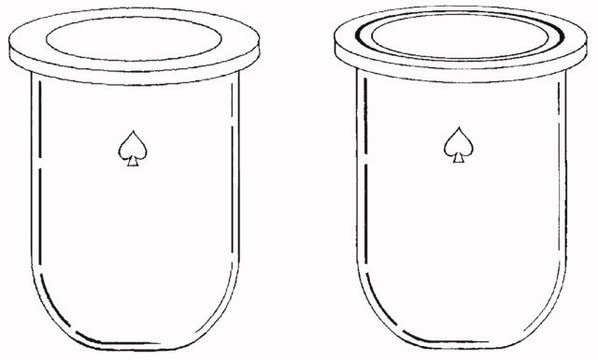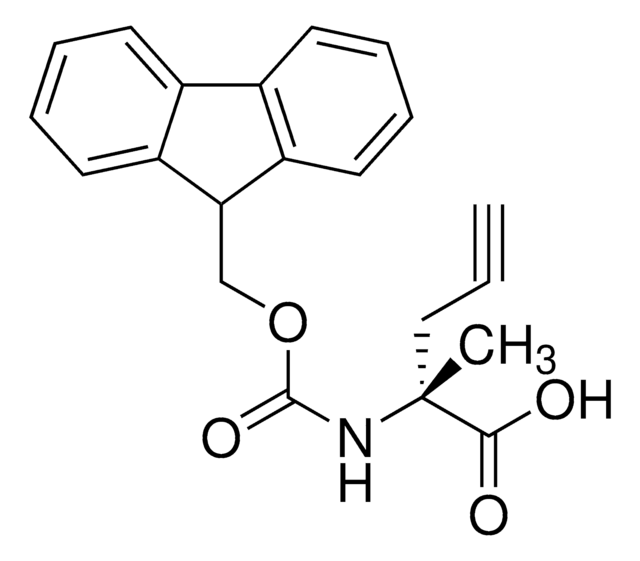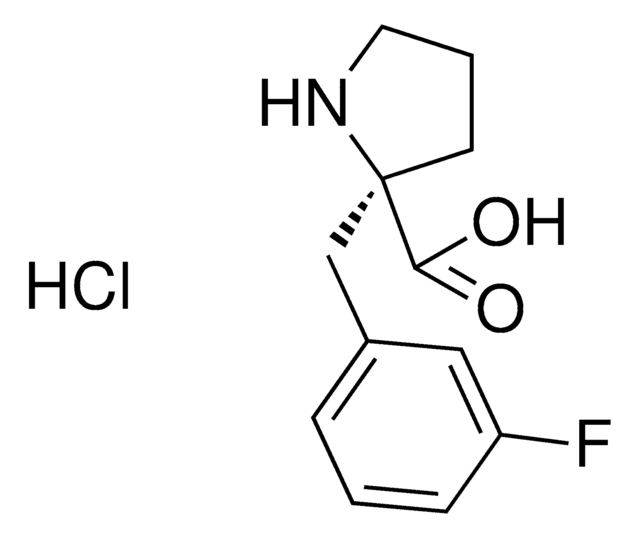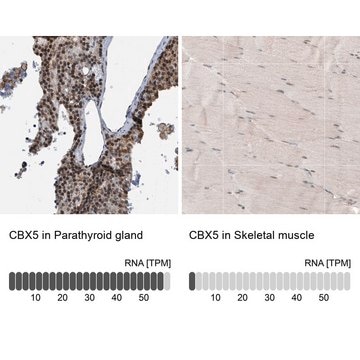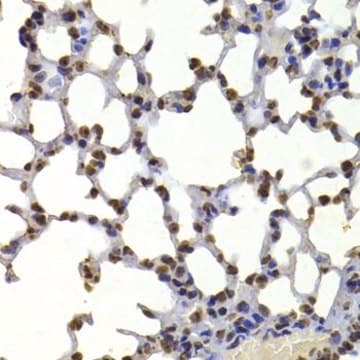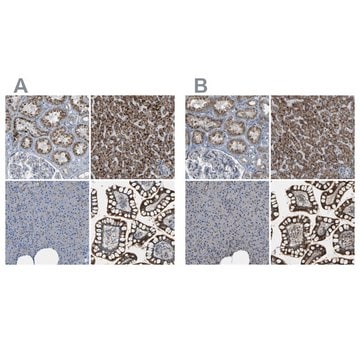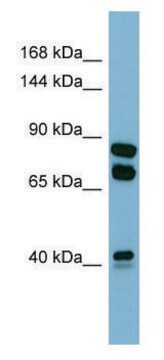MAB3446
Anti-Heterochromatin Protein-1 α Antibody, clone 2HP-2G9
ascites fluid, clone 2HP-2G9, Chemicon®
Synonym(s):
HP1a, Antigen p25, Chromobox Protein Homolog 5
About This Item
Recommended Products
biological source
mouse
Quality Level
antibody form
ascites fluid
antibody product type
primary antibodies
clone
2HP-2G9, monoclonal
species reactivity
mouse, human
manufacturer/tradename
Chemicon®
technique(s)
ELISA: suitable
immunoprecipitation (IP): suitable
western blot: suitable
isotype
IgG1
NCBI accession no.
UniProt accession no.
shipped in
wet ice
target post-translational modification
unmodified
Gene Information
human ... CBX5(23468)
General description
Heterochromatin is characterized as densely coiled chromatin that generally replicates late during S phase, has a low gene density, and contains large blocks of repetitive DNA that is relatively inaccessible to DNA-modifying reagents. In late S phase, p150 directly associates with heterochromatin associated proteins 1 (HP1α, HP1β and HP1γ). As cells prepare for mitosis, CAF-1 p150 and some HP1 progressively dissociate from heterochromatin, coinciding with the phosphorylation of histone H3. The HP1 proteins reassociate with chromatin at the end of mitosis, as histone H3 is dephosphorylated.
Specificity
Immunogen
Application
Western blot: 1:500-1:5,000
Immunoprecipitation: 1:500-1:5,000
Immunohistochemistry/Immunocytochemistry: Not Recommended
Note: for immunocytochemistry and immunohistochemistry we recommend CHEMICON catalog number MAB3584.
Optimal working dilutions must be determined by the end user.
Target description
Physical form
Analysis Note
Positive Control: HeLa cells, 3T3 cells , F9 cells, mouse embryos
Other Notes
Legal Information
Not finding the right product?
Try our Product Selector Tool.
Storage Class Code
10 - Combustible liquids
WGK
WGK 1
Flash Point(F)
Not applicable
Flash Point(C)
Not applicable
Certificates of Analysis (COA)
Search for Certificates of Analysis (COA) by entering the products Lot/Batch Number. Lot and Batch Numbers can be found on a product’s label following the words ‘Lot’ or ‘Batch’.
Already Own This Product?
Find documentation for the products that you have recently purchased in the Document Library.
Our team of scientists has experience in all areas of research including Life Science, Material Science, Chemical Synthesis, Chromatography, Analytical and many others.
Contact Technical Service
